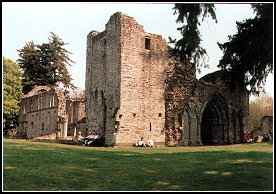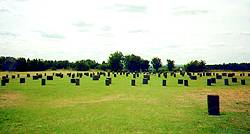Saint Cybi and Saint Cybi’s Church (Holyhead)
Saint Cybi was said to be the cousin of Saint David (~500- 1st March 589AD, there is uncertainty to the dates), the Patron Saint of Wales, and the friend of Saint Seiriol who founded his cell at Penmon on Ynys Môn (Anglesey) with whom he would regularly meet. According to the ‘Life of Saint Cybi’, he was a Cornish prince, the son of Salomon (thought to have been the King of Cornwall). He made a pilgrimage to Rome and Jerusalem, and then became a priest and later a bishop. On his return to Cornwall he found his father had died, but he declined the throne, and instead travelled through Cornwall preaching, and establishing churches (notably at Cubert, Duloe, Landulph and Tregony). He then founded some churches in South Wales, travelled to Ireland and eventually landed on the Lleyn peninsula in North Wales where he settled at Llangybi. King Maelgwn Gwynedd gifted him an old three walled Roman fort and naval base at Holyhead (Caergybi (Cybi’s Fort)) and he founded a monastery within its walls in around 540AD.
Saint Cybi died on the 8th November 555AD and was buried in a small detached chapel at the monastery in Holyhead called ‘Capel y Bedd’ the Chapel of the Grave.
The church of Saint Cybi in Holyhead has been sacked by the Vikings in the 10th Century and then violated by the army of King Henry IV when he invaded Anglesey from Ireland in 1405, during the reign of Owain Glyndwr. King Henry’s army stole Saint Cybi’s shrine and relics, and took them to Dublin where they were placed in Christ Church Cathedral. These subsequently disappeared during the Protestant Reformation. Then during the English Civil War, Cromwell’s men were garrisoned at the church for several years, destroying the font, windows, statues and tombs.
The remains of the original Roman walls and corner towers are still standing at the present church, rising up to thirteen feet high and being five feet wide. The round corner towers are approximately sixteen feet in diameter. It is thought that this rare three walled fort (the fourth wall being the sea) was used to protect the land from pirates and sea raiders, and there was probably a Roman watch tower at nearby Caer-y-Twr which was the forts look out position. The fort was probably abandoned in or around 393AD when the Roman troops were probably sent to quell the Gaul uprising of Flavius Eugenius (died 6th September 394AD).

![Peter Broster [CC BY 2.0 (https://creativecommons.org/licenses/by/2.0)], via Wikimedia Commons](http://www.mysteriousbritain.co.uk/wp/wp-content/uploads/2012/06/St_Cybi_8062261644-300x225.jpg)



Recent Comments